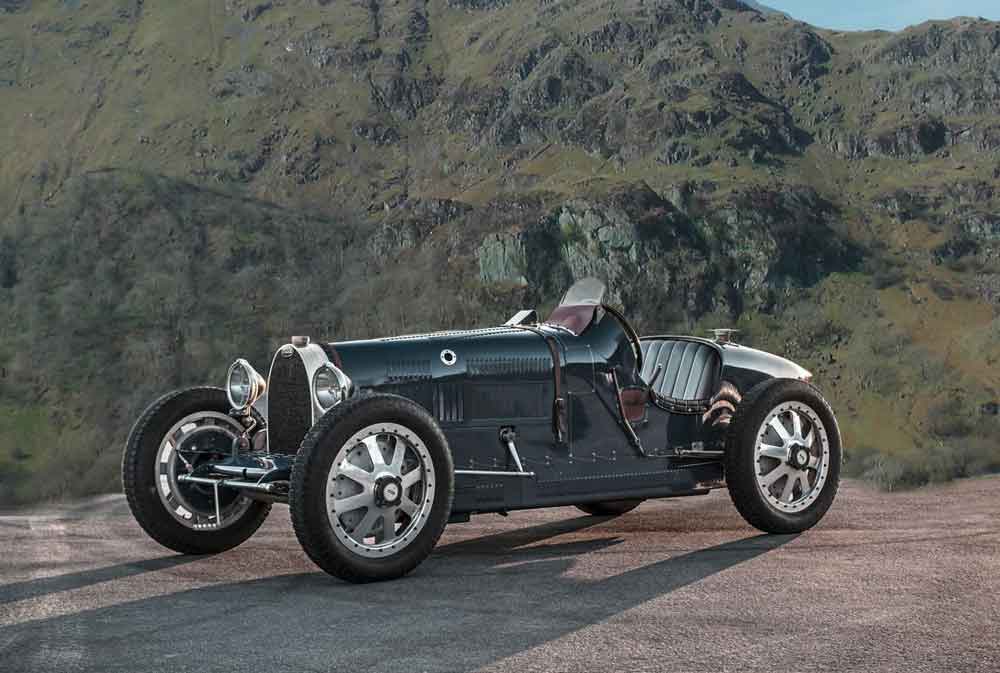Bugatti
and their cars

The Type 35

In 1924 Bugatti introduced the Type 35, a two seater open sports model which was far and away the most successful racing car of it's era. How many cars can be claimed to have worn more than 1000 races? The list of successes is legendary; in 1926 they won the first-ever Grand Prix World Championship; and the Targa Florio, an open road endurance race in the mountains of Sicily, had a Bugatti coming home in first place for five years consecutively. At one stage Type 35s were averaging around 14 wins per week in all kinds of races all over the world, and yet after competing in yet another gruelling race the car could be simply driven home on the roads. This was far and away the world's most successful sports car of the day.
Further successes included the Grand Prix's of France, Italy, Spain, Monaco, Belgium, Czechoslovakia, and Australia. The dome-shaped radiator on the distinctive blue cars became a common sight taking the chequered flag with monotonous regularity!
The success was not down to just a powerful engine or excellent handling; it was a combination of all of them. This was a car that was loved by racing drivers. It's roadholding was limpet -like, handling was precise, braking and steering were superb. And it was nippy. The original 2 litre straight eight cylinder overhead camshaft engine featured a three valves design which allowed higher revolutions per minute and this one could deliver 90 horsepower at 6000 rpm, revolutionary at the time, and later models could produce even more.
This was a lightweight car. Alloy wheels were used and further weight was reduced by providing a hollow front axle. This went right against the common beliefs of the day that to make a car grip the road it had to be made heavier! The buying public fell in love with the 35 and more than 300 of them were built and sold.
By 1925 a cheaper version was brought out, named the 35A; this had a less efficient, but more easily maintained engine but only 139 of these were sold and it became obvious that the demand was for the more powerful cars, even though they were more expensive. The logical next step was to bring out a more powerful one still; a supercharger was fitted, boosting the power output to around 128 horsepower; 50 of these were built and then the final version, the 1927 35B (yes the 'C' came before the 'B') had a larger 2.3 litre engine and a bigger supercharger boosting power output to 138 horsepower and 45 of these were made.
Bugatti however was sticking with cable operated brakes at a time when other racing car manufacturers were switching to hydraulic systems. When challenged, pugnacious as ever, he replied that he made cars to go, not to stop!